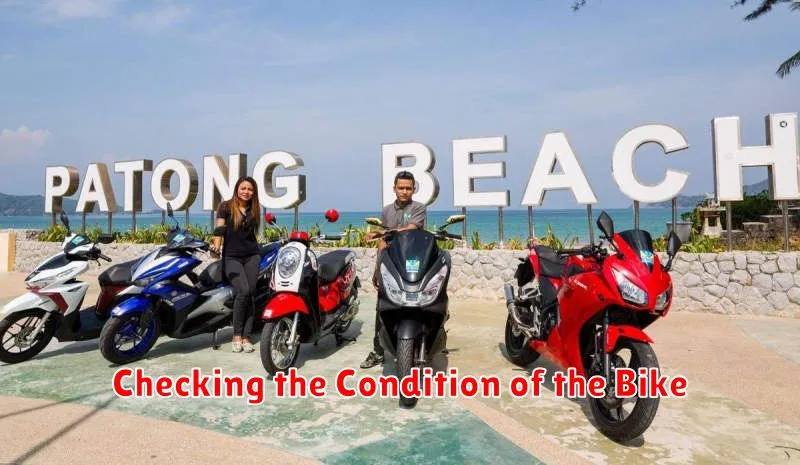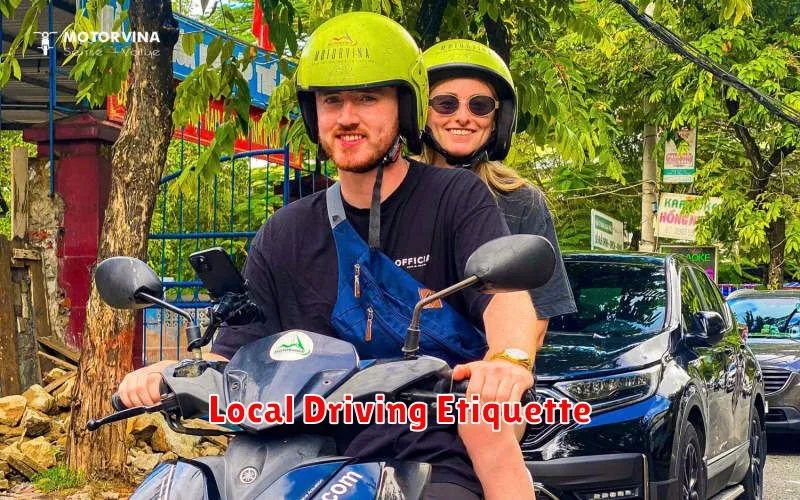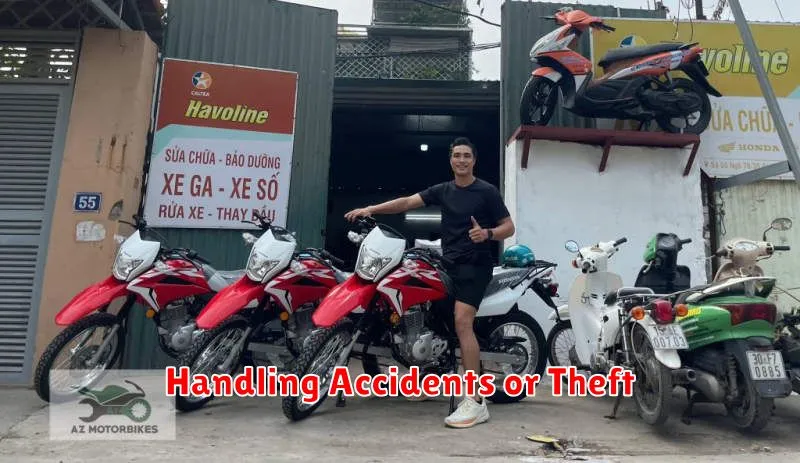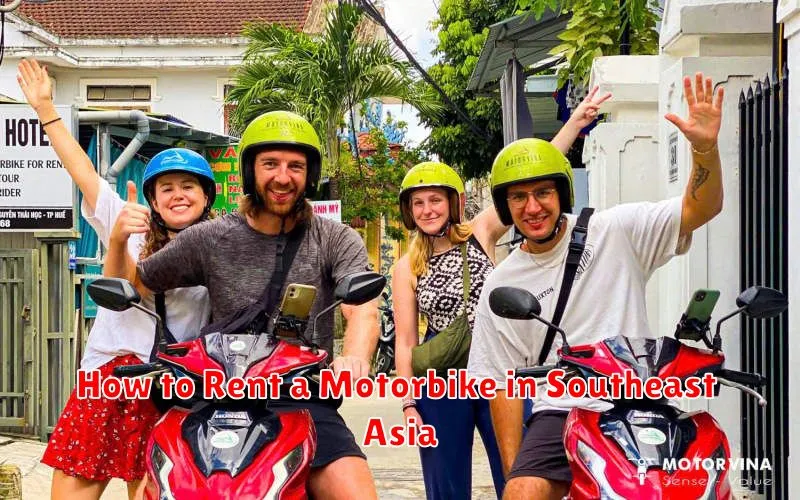Southeast Asia, a land of vibrant cultures and breathtaking landscapes, is best explored at your own pace. Renting a motorbike offers unparalleled freedom and flexibility, allowing you to venture off the beaten path and discover hidden gems. Renting a motorbike in Southeast Asia is a popular and often affordable way to travel, enabling you to experience the region’s beauty on your own terms. This guide provides essential information on how to rent a motorbike in Southeast Asia, covering everything from choosing the right bike to navigating local regulations and staying safe on the road.
Whether you’re planning a short trip or an extended backpacking adventure, renting a motorbike in Southeast Asia can transform your travel experience. From bustling city streets to serene countryside roads, a motorbike provides access to remote areas and allows for spontaneous detours. This comprehensive guide will equip you with the knowledge you need to confidently rent a motorbike, ensuring a smooth and enjoyable journey through the wonders of Southeast Asia. Learn about the necessary documentation, insurance considerations, and tips for finding reputable rental shops. Discover how to negotiate prices, inspect the motorbike for safety, and understand local traffic laws to ensure a safe and rewarding experience.
Required Documents and Licenses
Renting a motorbike in Southeast Asia requires specific documentation. While requirements can vary slightly between countries, some commonalities exist.
International Driving Permit (IDP)
An IDP is generally required and serves as an officially translated version of your driver’s license. Ensure your IDP covers the motorcycle category.
Passport and Visa
Your passport must be valid for at least six months beyond your travel dates. A valid visa is also necessary depending on your nationality and the length of your stay.
Local Driving Permits (sometimes accepted)
Some countries may accept a valid motorcycle license from your home country, but this is less common. It is always best to have an IDP.
Other Documents (May Vary)
Some rental agencies might require additional documentation, such as a photocopy of your passport or a signed rental agreement. It’s best to inquire with the rental agency beforehand.
Where to Find Rentals
Locating motorbike rentals in Southeast Asia is generally straightforward. Rental shops are ubiquitous, especially in tourist hubs and near transportation centers. You’ll often find them clustered together, allowing for easy price comparison and selection.
Your accommodation can be a valuable resource. Many hotels, guesthouses, and hostels offer motorbike rentals directly or can connect you with reputable local providers. Inquire at the reception desk upon arrival.
Online platforms are also gaining popularity for booking rentals. While convenient for pre-planning, exercise caution and thoroughly research the provider’s reputation before committing. Double-check reviews and ensure they have a physical location.
Finally, simply walking around and exploring your immediate area can often yield results. Keep an eye out for signage indicating motorbike rentals and don’t hesitate to inquire with locals for recommendations.
Checking the Condition of the Bike

Before you sign any paperwork or hand over any money, thoroughly inspect the motorbike. This is crucial to avoid scams and ensure a safe and enjoyable trip.
Tires: Check the tire pressure and look for any cuts, bulges, or excessive wear. Tires in poor condition can significantly impact handling and safety.
Brakes: Test both front and rear brakes. They should engage firmly and smoothly. Squealing or grinding noises could indicate a problem.
Lights: Ensure all lights are functioning correctly, including the headlight, taillight, brake lights, and turn signals. Visibility is essential for safe riding, especially at night.
Bodywork: Inspect the bike for any existing damage, such as scratches, dents, or cracks. Document any pre-existing damage with photos or video to avoid being held responsible later.
Horn: Make sure the horn works. It’s an important safety feature for navigating busy Southeast Asian roads.
Mirrors: Ensure the mirrors are properly adjusted for good visibility. This will help you stay aware of your surroundings.
Local Driving Etiquette

Understanding and respecting local driving customs is crucial for a safe and enjoyable motorbike experience in Southeast Asia. Traffic laws may not be enforced as strictly as in other parts of the world, but observing local etiquette will help you navigate the roads smoothly and avoid conflicts.
Be aware of the constant flow of traffic. Motorbikes, cars, and other vehicles often weave through traffic and make frequent lane changes. Exercise caution and stay alert at all times. Avoid abrupt maneuvers and always signal your intentions clearly.
Horns are used frequently, not necessarily to express anger, but often as a warning to other road users. Don’t be startled by the constant honking; simply remain aware of your surroundings. Use your horn when necessary to alert others to your presence, especially at blind corners or intersections.
Be mindful of pedestrians and cyclists. They often share the roads with motorbikes and other vehicles. Yield to pedestrians and give cyclists ample space when overtaking.
Traffic Laws You Must Know
Before hitting the road, familiarize yourself with the local traffic laws. Regulations can vary significantly between countries in Southeast Asia. Always drive on the correct side of the road, which is typically the left side in most of the region, except for countries like Myanmar.
International Driving Permits (IDP) are generally recommended and sometimes required. Check the specific requirements for the country you are visiting. Ensure your motorbike rental includes the necessary insurance and registration documents.
Helmet use is mandatory in most areas. Avoid riding without a helmet, not only for your safety but also to avoid potential fines. Be mindful of local speed limits and traffic signals. Traffic enforcement can be strict in some areas.
What to Avoid During Rental
Avoid renting from unofficial vendors. Stick to reputable rental shops with established businesses. This reduces the risk of scams and ensures better vehicle maintenance.
Don’t leave your passport as a deposit. A photocopy is usually sufficient. If a vendor insists on the original, consider it a red flag and find another rental place.
Thoroughly inspect the motorbike before renting. Document any existing damage with photos and videos, pointing them out to the vendor. This protects you from being held liable for pre-existing issues.
Avoid driving at night, especially in rural areas. Road conditions can be unpredictable, and visibility is reduced, increasing the risk of accidents.
Refrain from driving under the influence of alcohol or drugs. This is not only illegal but also extremely dangerous. Penalties can be severe, including imprisonment.
Don’t carry excessive passengers or luggage. This can affect the bike’s stability and increase the risk of accidents. Adhere to the recommended passenger and luggage limits.
Handling Accidents or Theft

Accidents and theft, while unfortunate, can occur. Knowing how to handle these situations is crucial for a smooth resolution. Contact your rental company immediately if you are involved in an accident, no matter how minor it seems. Provide them with all relevant details, including the location, time, and description of the incident. Document the scene if possible.
File a police report as this is often required for insurance claims. Your rental agreement should outline the procedures to follow in case of an accident or theft. Familiarize yourself with these terms before you begin your journey.
Depending on your insurance coverage and the specifics of the rental agreement, you may be responsible for some costs. Understand your liability to avoid unexpected expenses.

